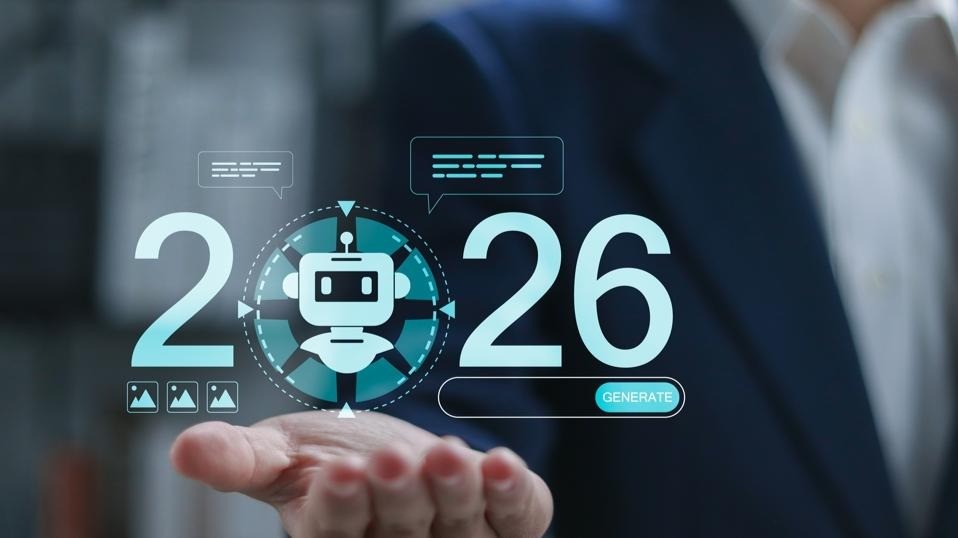Robotic Process Automation And Artificial Intelligence In HR And Business Support – It’s Coming
2 July 2021
The use of robotics and advanced analytics are apparent and mature in industrial settings, while in support functions such as HR, it has the potential to be just as revolutionary but the uptake has been a little slower.

For example, in HR, onboarding – the process of hiring new members of staff and putting them to work following recruitment– generally takes around one month, according to recent research by CareerBuilder. The various processes – taking up references, verifying identities, carrying out health and safety assessments and ensuring hires have an understanding of company practises, policies and culture – requires a complex set of actions and toolsets which are not easy to automate.
However, there’s a lot to gain – as well as driving efficiency by cutting down time spent on mundane but vital processes and compliance, automating tasks like this will free up skilled workers to apply themselves more creatively.
In fact, the potential up-sides mean that automation of support functions is an inevitability, as market forces drive businesses to strive for ever greater efficiency efficiency. CareerBuilder’s survey bears this out – with 72% of employers predicting that certain recruitment and HR roles will be completely automated by 2028.
An important point I am making in many of my articles and my book Data-Driven HR is that this doesn’t mean we will replace HR departments with robots but that automation will severely augment the jobs people will be doing in support functions like HR. Parts of the workload – dealing with interpersonal or disciplinary issues – still require a human touch.
These skills are likely to become increasingly important to the HR support professional – as well as the ability to work with the automated tools taking care of the mundane aspects of the job.
This month PeopleDoc launched their solution to the problem automating the disparate toolsets used across business support functions. Their Robotic Process Automation platform uses “PeopleBots” which run alongside existing systems to “listen” for events and processes which can be automated.
The idea is that they will use analytic technologies including machine learning algorithms to learn to automatically execute repetitive tasks and follow-on actions, leading to more accurate results and reducing the need for humans to carry out tedious repetitive actions.
COO and co-founder Clément Buyse told me that they focus on HR infrastructure because core business functions, as well as sales and marketing, are already well-served with automation.
“HR is not as sexy but its very people-centric, and it all starts with the user experience,” he said.
“Now our customers are reaching a point where they would like to go further in terms of automation … they want to take a hybrid approach, mixing processes with people and machines, injecting some machine learning.”
The nature of HR and administrative tasks is that often they vary little from one business or use case to another. This means what a machine learning algorithm could learn about driving efficiency within one organization’s HR activities will carry over very well to the next operation where it is deployed.
Within an admin or HR environment, automated bots can be used to offer assistance when a user appears to be having difficulty at a particular point during a process, and therefore go on to “learn” where obstacles are likely to be encountered.
They can also be used to keep disparate records synchronized between different departments or users, and the different systems that might be in use.
For example, in the case of onboarding, an automated process could be triggered by a manager changing the status of an applicant’s file to “hired”. This would trigger documents such as application forms and resumes to be routed to the correct departments for archiving, a job offer letter being dispatched by post, user accounts created on internal IT systems and an ID card generated.
For support functions, moving towards automation is likely to present certain challenges, which will be different for each of them. IT departments, for example, may more readily take to the changing nature of the technology they are asked to work with. Legal departments may be less enthusiastic about “handing over” processes of compliance to an automated colleague. And from the top, there may be pressure from the c-suite to focus tech-driven change on sexier, customer-facing activities.
But from studying businesses which have already experienced success at implementing their own slice of the “fourth industrial revolution” it’s clear that digital transformation is most effective when it is implemented throughout an organisation at all levels and functions.
This is going to involve innovative thinking as well as reassurances that technology is implemented to assist, rather than replace. But for organizations which are able to pull it all together, the rewards are there for the taking.
Related Articles
10 Generative AI Trends In 2026 That Will Transform Work And Life
By now, “smart” versions exist of just about every home appliance, gadget and gizmos we can think of. However, manufacturers continue[...]
Dreamforce 2025 Proved The Agentic Enterprise Has Arrived
By now, “smart” versions exist of just about every home appliance, gadget and gizmos we can think of. However, manufacturers continue[...]
The 8 Biggest AI Agent Trends for 2026 That Everyone Must Be Ready For
By now, “smart” versions exist of just about every home appliance, gadget and gizmos we can think of. However, manufacturers continue[...]
7 Workplace Trends That Will Define 2026
By now, “smart” versions exist of just about every home appliance, gadget and gizmos we can think of. However, manufacturers continue[...]
Is Autonomous Driving Ever Going To Happen?
By now, “smart” versions exist of just about every home appliance, gadget and gizmos we can think of. However, manufacturers continue[...]
AI And The End Of Progress? Why Innovation May Be More Fragile Than We Think
By now, “smart” versions exist of just about every home appliance, gadget and gizmos we can think of. However, manufacturers continue[...]
Sign up to Stay in Touch!
Bernard Marr is a world-renowned futurist, influencer and thought leader in the fields of business and technology, with a passion for using technology for the good of humanity.
He is a best-selling author of over 20 books, writes a regular column for Forbes and advises and coaches many of the world’s best-known organisations.
He has a combined following of 4 million people across his social media channels and newsletters and was ranked by LinkedIn as one of the top 5 business influencers in the world.
Bernard’s latest book is ‘Generative AI in Practice’.










Social Media